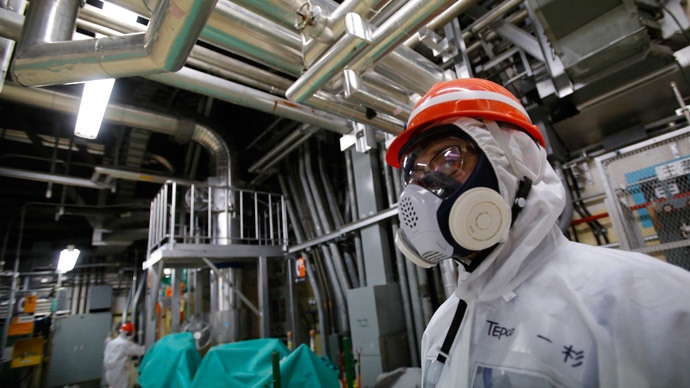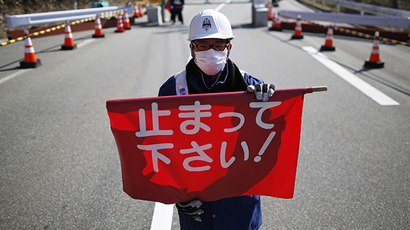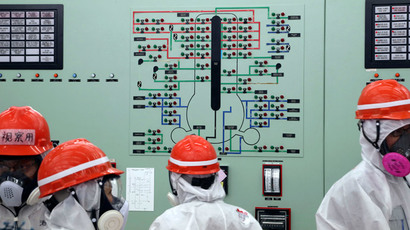No room for error? Fukushima basements mistakenly flooded with 200 tons of radioactive water

A pump at Japan’s battered Fukushima power plant has mistakenly flooded its basements with highly contaminated cooling-tank water. But the latest mishap follows a far more worrying discovery about one last year’s leak.
About 200 tons of water ended up flooding the basements beneath the complex, although the water didn’t have a pathway to reach the ocean or leak out to any other areas, fortunately. The plant’s operator, Tokyo Electric Power Co., ordered the leakage to be removed as soon as possible, The Asahi Shimbun reports.
The water has gathered beneath a cluster of facilities responsible for processing waste.
The scary part about this particular brand of tainted water has to do with its function to cool nuclear fuel rods in storage tanks. This catapults the amount of becquerels per liter of cesium into the tens of millions. The water had leaked before going through a purification process designed to reduce these levels.
The first signs of trouble came April 10, as water levels indoors suddenly weren’t being siphoned off, instead rising. But the discovery that four pumps used specifically to reverse the flow of water were active was only made two days later, on April 12. They weren’t switched off until the early evening the next day.
This is after the battered power plant saw close to a ton of toxic water escape a storage tank on Sunday. No contact with the ocean has been found.
Japanese media put that leak at 1,640 becquerels per liter of radioactive cesium, judging by the water remaining in the tank. TEPCO said one of its workers had found it in a tank some 700 meters away from the shoreline at about midday GMT Sunday.
The water didn’t manage to seep into the Pacific, because there’s no ditch around the area; however, it did manage to pour into the ground, according to one official, who reported damage to the lower part of the tank.
However, the mishaps don’t stop there. The leaks come on the heels of a far more worrying discovery about radiation amounts in an August incident last year.
TEPCO revealed Friday that the massive leak of 300 tons of toxic water in August is far more catastrophic than initially thought, after recalculating radiation levels.
Just as the government overturned the initiative for a nuclear-free Japan by 2030, amid public outrage, news emerged that the Pacific Ocean had received a dose of 280 million becquerels per liter of radioactive materials from the August 2013 leak. The Japan Times reports that the Nuclear Regulation Authority put the incident at Level 3 (out of a possible eight).
TEPCO had used data from 173 water samples it had collected by last October and found that its measurements could have been offset by bad formulas. TEPCO then used a theoretical formula to arrive at the new results by performing some extrapolations.
Cleaning up the power plant is becoming an increasingly complex and challenging task. While Japan has had to cut high energy costs by refusing to get rid of nuclear power, the price of cleaning up the area, siphoning off toxic water and decontaminating the plant will be a decades-long venture costing the country billions of dollars.














